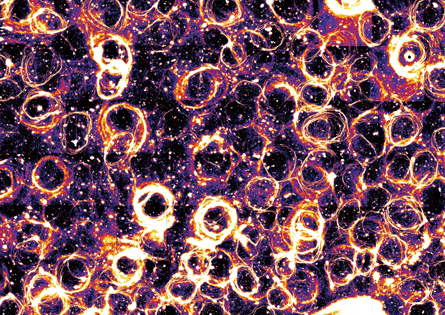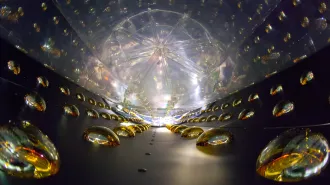- More than 2 years ago
Birds and bees do it, and now so do tiny protein strands — spontaneously moving together in the striking patterns known as collective motion.

Japanese researchers attached filaments of protein to a second protein that acts as a biological motor, rotating and driving the filaments to move. The scientists then injected ATP, a molecule that sends energy flowing within a cell; at first, the filaments meandered aimlessly around. But after about a quarter of an hour, they organized themselves into dramatic vortices nearly big enough to be seen by the naked eye.
Computer simulations showed how collisions between the strands helped shape their collective swarming, Kazuhiro Oiwa of the National Institute of Information and Communications Technology in Kobe, Japan, and colleagues report in the March 22 Nature.
Vortices appear all over the flowing surface, Oiwa says. The work suggests that collective motion might naturally emerge in more biological systems than scientists had thought.







